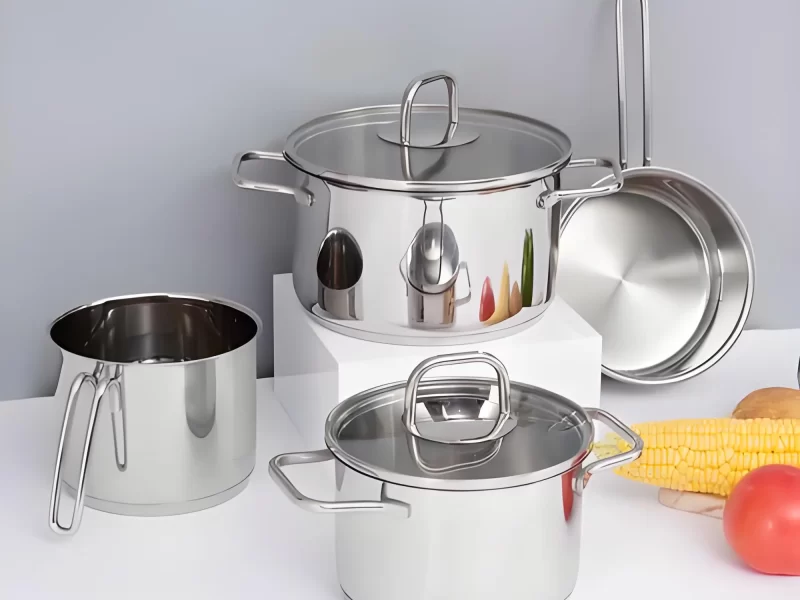
In the world of cooking, cookware is not only a basic tool in the kitchen, but also directly affects the cooking effect and taste of food. Different materials and designs are suitable for different cooking methods, and each type of cookware has its unique advantages and limitations.
En tant que cookware manufacturer, Hengguang is familiar with the characteristics of different types of cookware. In this article, we will compare seven common types of cookware for you to help you choose the most suitable kitchen partner according to your needs.
Comparison of Cookware of Different Materials
| Matériau | Conductivité thermique | Résistance à la chaleur | Poids | Durabilité | Ease of Cleaning | Suitable Cooking Methods |
| Cast Iron | Poor | Very high, can withstand high temperatures | Heavy | Very durable | Difficult to clean, prone to rust | Slow braising, stewing, roasting, frying |
| Stainless Steel | Moderate | High, heat resistant | Relatively light | Very durable | Facile à nettoyer | Stewing, frying, roasting, simmering |
| Aluminum | Excellent | Moderate, limited heat resistance | Light | Moderately durable | Facile à nettoyer | Stir-frying, frying, quick cooking |
| Copper | Excellent | Very high, heat resistant | Heavy | Very durable | Difficult to clean, requires maintenance | Fine cooking, stewing, delicate dishes |
| Non-stick Coating | Good | Moderate, limited heat resistance | Light | Moderate, coating can wear off | Extremely easy to clean | Frying, baking, roasting |
| Ceramic | Poor | High, heat resistant | Heavy | Moderately durable | Facile à nettoyer | Slow braising, roasting, simmering |
| Carbon Steel | Good | High, heat resistant | Moderate | Durable | Difficult to clean, requires maintenance | Stir-frying, frying, simmering |
ustensiles de cuisine en acier inoxydable
Pour : Stainless steel is one of the most common and popular kitchen materials. It is corrosion-resistant, heat-resistant, easy to clean, and very strong. High-quality stainless steel (such as 304 or 316 models) is also very safe for food contact.
Cons: It has poor thermal conductivity and requires a heavy aluminum or copper layer on the bottom to improve heating effect, so high-quality stainless steel cookware is relatively heavy
Usage scenarios: ustensiles de cuisine en acier inoxydable is widely used in home and commercial kitchens due to its corrosion resistance, high temperature resistance and easy cleaning properties. It is suitable for various cooking environments, including daily home use, large restaurants, hotels and catering industries.
Suitable cooking methods: Stainless steel cookware is suitable for boiling, stewing, steaming, frying, etc. Due to its poor thermal conductivity, it is recommended to use it for medium-heat cooking or choose cookware with a triply stainless steel bottom to enhance the heating effect.
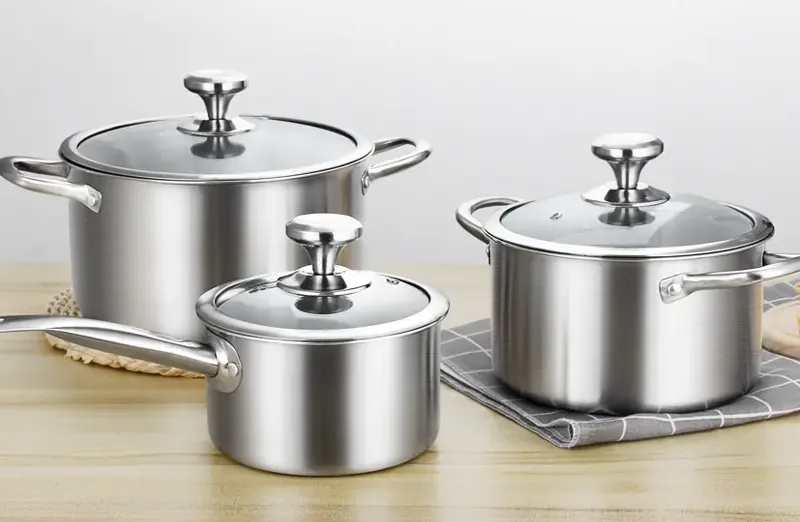
Cast Iron Cookware
Pour: Cast iron pans have excellent heat uniformity and heat retention, suitable for slow cooking, frying and grilling. It is very durable and can be used for a long time.
Cons: It is relatively heavy and requires regular maintenance (such as greasing to prevent rust). Some cast iron pans need to be oiled regularly to maintain their non-stick properties.
Use scenarios: Suitable for foods that require long cooking time, such as slow cooking, stewing, etc. Especially suitable for use in home kitchens or open fires.
Suitable cooking methods: slow cooking, stews, grilling, frying. Due to good heat uniformity, it is suitable for slow cooking and can maintain the temperature of dishes.
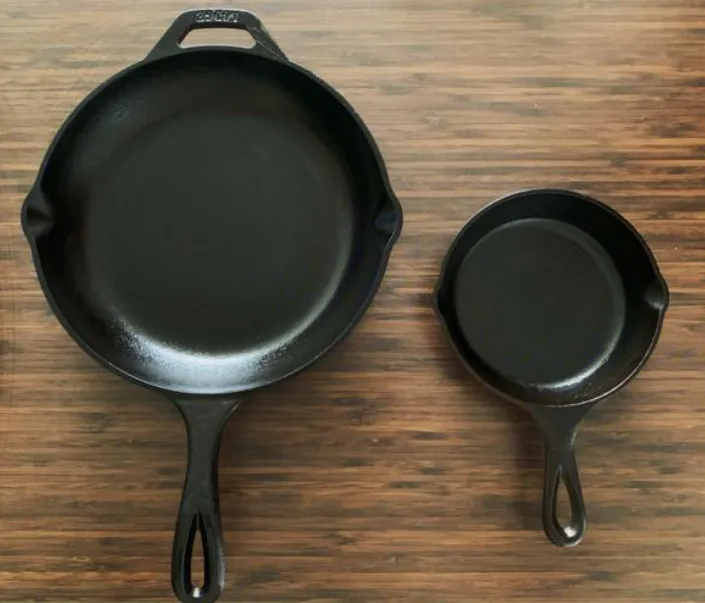
Copper Cookware
Pour : Copper is among the best heat conductors, it warms up very fast and evenly, and it is just perfect for high-end cookery, especially in the dishes with exact temperature control.
Cons: It easily oxidizes and needs special care. Most copper pots have some inner coating, usually stainless steel or tin, to prevent direct contact of copper with food.
Use scenarios: Suitable for high-end kitchens, especially for baking or cooking dishes requiring exact temperature control. Copper pots can often be found in the kitchens of high-class restaurants or food lovers.
Suitable cooking methods: Suitable for high-temperature boiling, fine cooking and high-end dishes. Copper pots are very suitable for dishes that require precise temperature control, such as chocolate, syrup, and condiments.
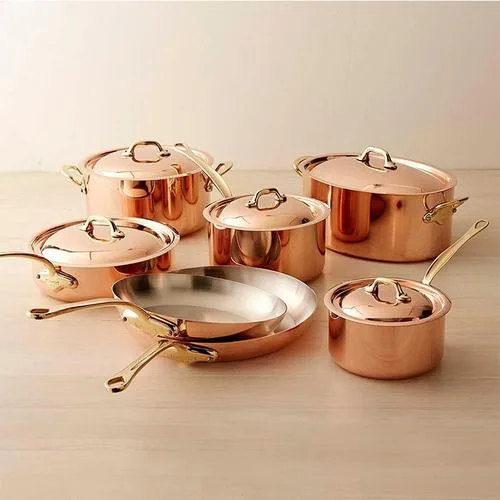
Aluminum Cookware
Pour : Aluminum pans are good conductors of heat and lightweight. Aluminum is generally inexpensive and suitable for quick heating and regular use.
Cons: Aluminum is easily scratched and quickly reacts with acidic foods; thus, many aluminum pans employ non-stick coatings or a lining of stainless steel to avoid these problems.
Usage scenarios: It is appropriate for stir-frying, quick boiling, and easy to find in family kitchens. Lightweight, cheap pans made of aluminum are appropriate for daily use.
Suitable cooking methods: suitable for foods which are quickly heated, like frying, stir-frying, stewing, etc. It is especially suitable for fast-fire cooking foods because of its good thermal conductivity.
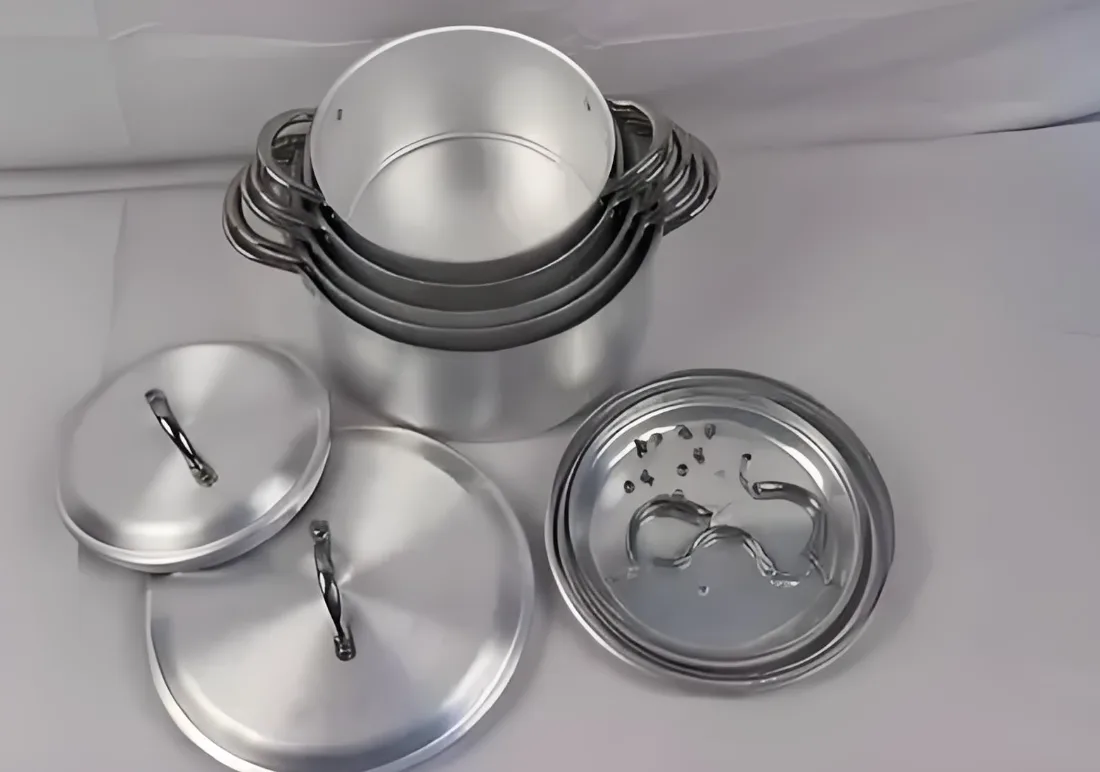
Pure Ceramic Cookware
Pour: Ceramic cookware has a very good even heating effect, and often non-stick and easy to clean. It is suitable for oven use or as a slow cooker.
Cons: It is fragile, so be careful when using it. Besides, some ceramic cookware may contain substances harmful to health, so the choice of certified safe ceramic products is important.
Usage scenarios: Ceramic cookware is very popular in home kitchens, especially for oven cooking. Due to its even heating performance, it is very suitable for cooking methods that require gentle heat, such as slow cooking, baking, and stewing.
Suitable cooking methods: Stewing, braising, etc. Ceramic pots are even heated and can keep the temperature, so they are suitable for cooking food that needs to be stewed for a long time at a low temperature.
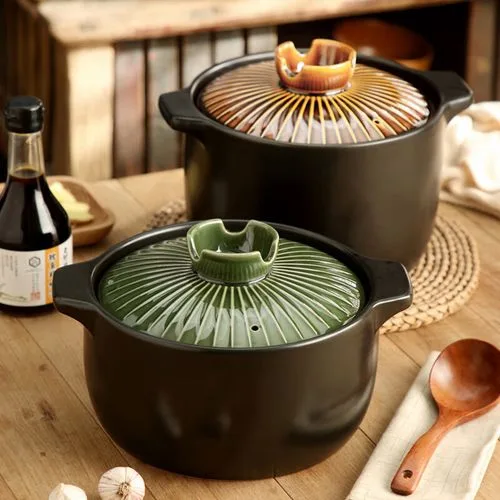
Non-Stick Cookware
Pour: The non-stick pan is very suitable for low-oil or oil-free frying, which can effectively reduce the sticking of food in the pan and is convenient for cleaning. It is usually used for frying and stir-frying, which needs frequent turning of food.
Cons: The coating may wear during use and is not suitable for high-temperature use. If the coating is damaged, it may affect safety. It is necessary to choose products that do not contain coatings with harmful substances (such as PTFE or PFOA).
Usage scenarios: Applicable to daily home kitchens, especially in cooking scenarios to reduce oil smoke and difficulty cleaning.
Suitable cooking methods: It is suitable for the cookware to be applied on low-oil or oil-free frying, stir-fry, and baking. The foodstuffs that are particularly suitable for no-stick include fried egg, pancake, and fish.
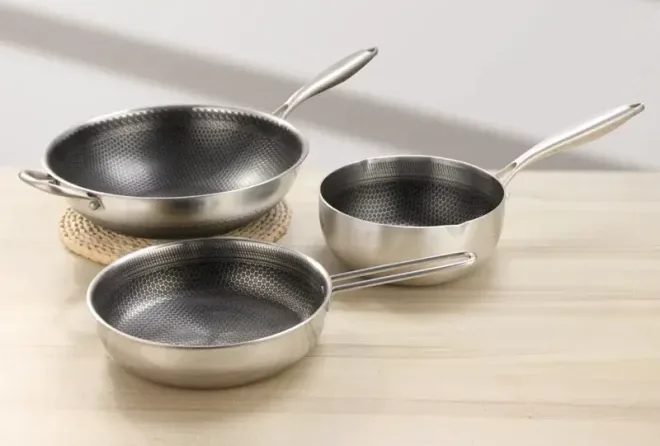
Carbon Steel Cookware
Pour: After proper maintenance, such as greasing and heating, carbon steel cookware can form a natural “polymerized” coating, which works very much like the effects of non-stick pans. Carbon steel pots can go to very high temperatures and are suitable for high-temperature frying among other cooking manners.
Cons: Carbon steel cookware requires regular greasing to avoid rust and retain its natural non-stick characteristics. If carbon steel is not cleaned in time and oiled after use, it is prone to rust.
Usage scenarios: Carbon steel cookware is widely applied in home kitchens, restaurant kitchens, especially when the cooking needs to be performed under high temperatures. They are often used for stir-fries, frying, and grilling. It finds widespread applications in commercial kitchens as well as outdoor cooking.
Suitable cooking methods: Carbon steel cookware can be used for high-temperature frying, frying, stewing, and baking. Because of its excellent heat conductivity, it is highly suitable for frying fish and steaks and vegetables, which require high temperature and rapid heating. It can also heat the oil up very fast and is suitable for deep-frying foods.
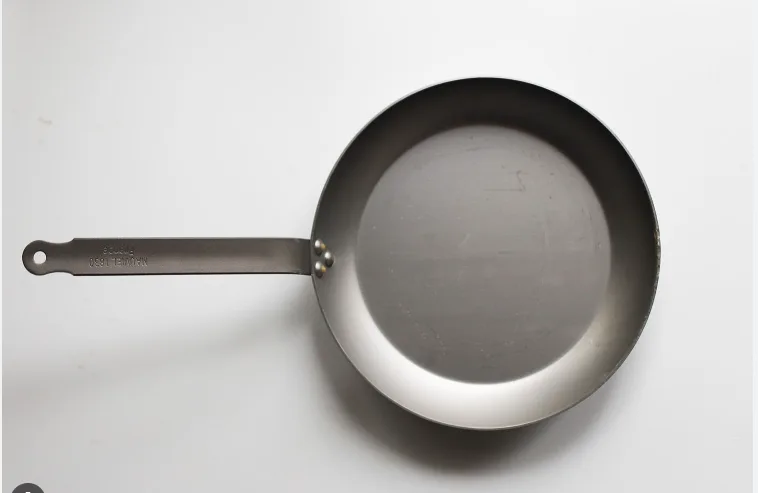
Résumé
The best choice depends on your needs. If you like traditional cooking methods and value durability, you can choose cast iron or stainless steel.
If you prefer cookware that heats efficiently and evenly, copper and titanium alloys are also very good choices.
For easy cleaning and low-oil healthy cooking, non-stick pans and ceramic materials are ideal.
When purchasing, in addition to the material, you should also consider factors such as the design, weight, and heating method (suitable for induction cookers or gas stoves, etc.) of the pot.
À propos de Hengguang
Hengguang is a stainless steel fabricant d'ustensiles de cuisine from China with over 30 years of OEM & ODM experience, providing high-quality batterie de cuisine en acier inoxydable, pots à lait, woks, , stew pots, non-stick pans and other cookware products.
Hengguang’s products are widely used in home kitchens, hotel restaurants and commercial kitchens. With its excellent quality control and customized cookware services, it has won the trust and praise of customers all over the world. Welcome to contact us.